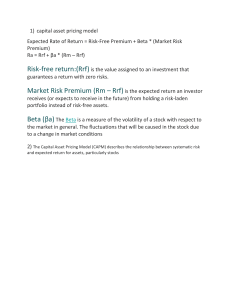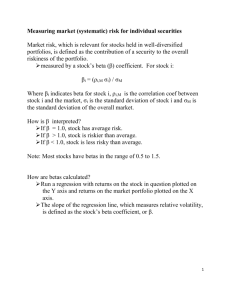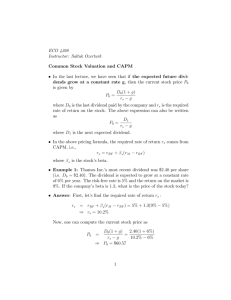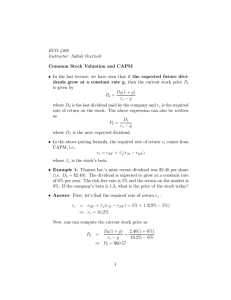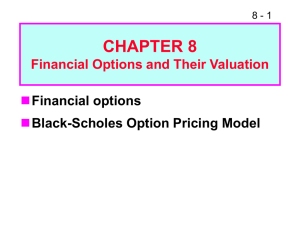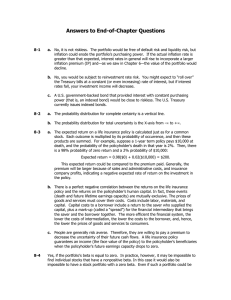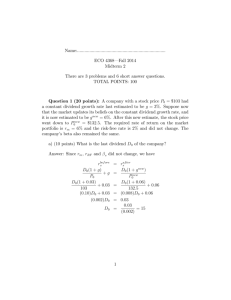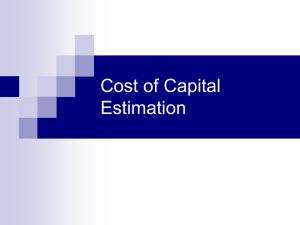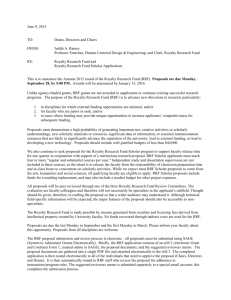Tuesday, March 20, 2007 Ch 8-2
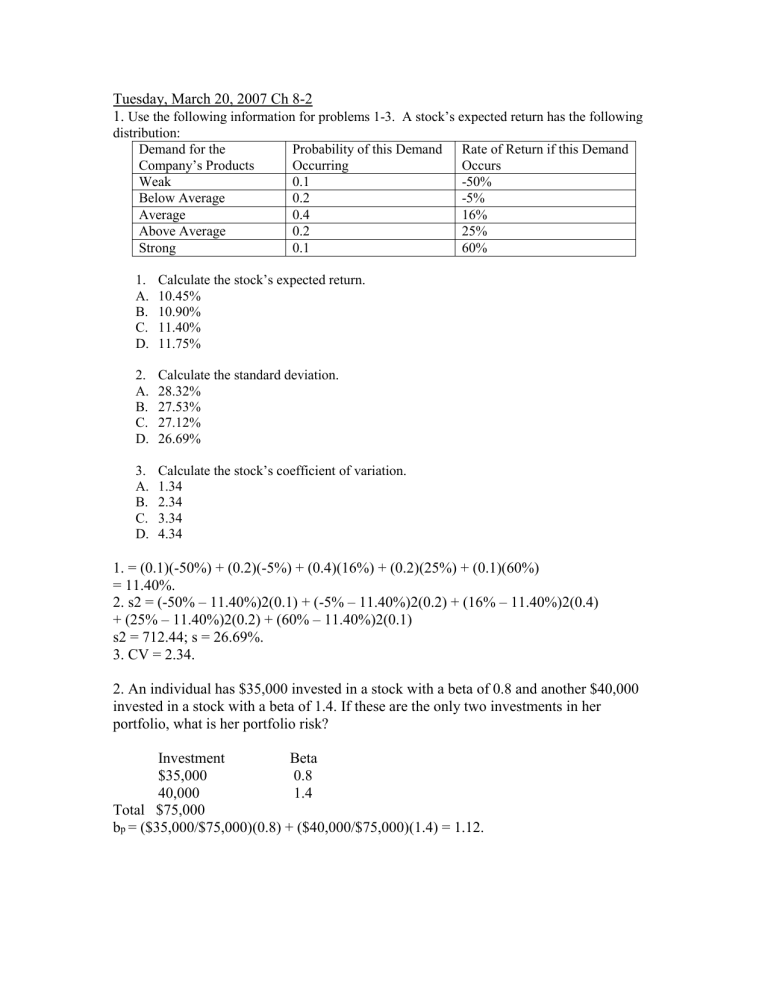
Tuesday, March 20, 2007 Ch 8-2
1. Use the following information for problems 1-3. A stock’s expected return has the following distribution:
Demand for the
Company’s Products
Weak
Below Average
Average
Probability of this Demand
Occurring
0.1
0.2
0.4
Above Average
Strong
0.2
0.1
1.
Calculate the stock’s expected return.
A.
10.45%
B.
10.90%
C.
11.40%
D.
11.75%
2.
Calculate the standard deviation.
A.
28.32%
B.
27.53%
C.
27.12%
D.
26.69%
3.
Calculate the stock’s coefficient of variation.
A.
1.34
B.
2.34
C.
3.34
D.
4.34
Rate of Return if this Demand
Occurs
-50%
-5%
16%
25%
60%
1. = (0.1)(-50%) + (0.2)(-5%) + (0.4)(16%) + (0.2)(25%) + (0.1)(60%)
= 11.40%.
2. s2 = (-50% – 11.40%)2(0.1) + (-5% – 11.40%)2(0.2) + (16% – 11.40%)2(0.4)
+ (25% – 11.40%)2(0.2) + (60% – 11.40%)2(0.1) s2 = 712.44; s = 26.69%.
3. CV = 2.34.
2. An individual has $35,000 invested in a stock with a beta of 0.8 and another $40,000 invested in a stock with a beta of 1.4. If these are the only two investments in her portfolio, what is her portfolio risk?
Investment Beta
$35,000
40,000
0.8
1.4
Total $75,000 b p
= ($35,000/$75,000)(0.8) + ($40,000/$75,000)(1.4) = 1.12.
3. Assume that the risk-free rate is 6 percent and the expected return on the market is 13 percent. What is the required rate of return on a stock with a beta of 0.7? r
RF
= 6%; r
M
= 13%; b = 0.7; r = ? r = r
RF
+ (r
M
– r
RF
)b
= 6% + (13% – 6%)0.7
= 10.9%.
4. Assume that the risk-free rate is 5 percent and the market risk premium is 6 percent.
What is the expected return for the overall stock market? What is the required return on a stock with a beta of 1.2? r
RF
= 5%; RP
M
= 6%; r
M
= ? r
M
= 5% + (6%)1 = 11%. r when b = 1.2 = ? r = 5% + 6%(1.2) = 12.2%.
5. A stock has a required return of 11%; the risk-free rate is 7%; and the market risk premium is 4%. a. What is the stock’s beta? b. If the market risk premium increased to 6%, what would happen to the stock’s required rate of return? Assume that the risk-free rate and the beta remain unchanged a. r = 11%; r
RF
= 7%; RP
M
= 4%. r = r
RF
+ (r
M
– r
RF
)b
11% = 7% + 4%b
4% = 4%b b = 1. b. r
RF
= 7%; RP
M
= 6%; b = 1. r = r
RF
+ (r
M
– r
RF
)b
= 7% + (6%)1
= 13%.
6. ERCI Corporation is a holding company with four main subsidiaries. The percentage of its capital invested in each of the subsidiaries, and their respective betas, are as follows
Subsidiary Percentage of Capital Beta
Electric Utility
Cable Company
60%
25
0.70
0.90
Real Estate Development
International/special projects
10
5
1.30
1.50 a. What is the holding company’s beta? b. If the risk-free rate is 6% and the market risk premium is 5%, what is the holding company’s required rate of return? a. b = (0.6 X 0.70) + (0.25 X 0.90) + (0.1 X 1.30) + (0.05 X 1.50) beta = 0.85 b. rRF = 6%; RPm = 5%; b = 0.85 r = 6% + (5%)(0.85) r = 10.25%
7. Calculate the required rate of return for Manning Enterprises, assuming that investors expect a
3.5% rate of inflation in the future. The real risk-free rate is 2.5% and the market risk premium is
6.5%. Manning has a beta of 1.7, and its realized rate of return has averaged 13.5% over the past
5 years. rF = r* + IP = 2.5% + 3.5% = 6% r s
= 6% + (6.5%)1.7 = 17.05%.
The risk-free rate is compromised of 1. a real inflation-free rate, r*; and, 2. an inflation premium
